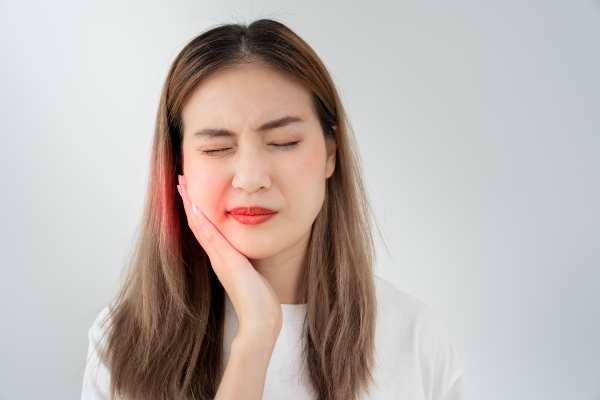Oral Surgery for Impacted Tooth Removal

If you have impacted teeth (usually your wisdom teeth), the dentist might recommend oral surgery for removing them. These teeth can cause a lot of problems. For example, wisdom teeth can grow in wrong and become painful and cause irritation. They can also make it difficult to chew properly. Because of their impacted nature, it can be difficult to keep them clean, which raises the risks of cavities and infections.
It is understandable to be a little nervous about the procedure, especially if it requires any type of sedation. It can help that you understand what your dentist or oral surgeon is doing when removing your teeth.
Oral surgery for impacted teeth
Regular dental offices or surgical dental offices can take out wisdom teeth or other impacted teeth. No matter where the oral surgery takes place, there will be specific steps the surgeon will take.
Sedation
The dentist will talk to the patient about the preferred type of sedation. The patient’s level of fear and required extractions help determine which type to use. Sedation can involve nitrous oxide, oral medicine or IV sedation. IV sedation is a popular choice since the patient is unlikely to remember the procedure after completion.
Numbing and imaging
Once the sedation has taken place, the surgeon or dentist will numb the impacted teeth and the surrounding tissue with a local anesthetic. Most people will already have X-rays completed. However, sometimes the dentist requires another one at the start of the procedure.
Tissue removal
The surgeon or dentist will start the surgery by removing the gum tissue covering the impacted tooth. An incision in the tissue allows access to the patient’s tooth. The dentist then moves the tissue out of the way with a surgical instrument until the tooth is fully visible.
Bone removal
There is a chance the impacted tooth may be partially or fully covered in bone. If so, a dental instrument will drill through the bone and remove it from the tooth. If the tooth has erupted in the patient’s mouth, the dentist or surgeon will loosen the connective tissue around the tooth.
Removing the tooth
Once the tooth is visible, different surgical tools will loosen the tooth from the tooth socket. The dentist or surgeon may have to cut the tooth into sections to prevent it from breaking. Once the impacted tooth is sectioned and loosened, the dentist can remove it.
Recovery
After the tooth removal, the dentist may need to stitch the area closed. This is necessary when the dentist feels that the patient will have an easier time healing with stitches in place. The patient will be brought out of sedation and provided with gauze to help the blood clot.
Healing from impacted tooth removal
Once you understand the process of having your impacted teeth extracted, it hopefully will not be so frightening. It is important for you to listen to all post-op instructions given by the dentist or surgeon. This is especially true during the first seven to 10 days following your oral surgery. If you have impacted teeth, talk to a dentist about oral surgery and ask how it can improve your dental health.
Request an appointment here: https://hemetdentalcenter.com or call Hemet Dental Center: Brian Stiewel DDS, INC. at (951) 707-4366 for an appointment in our Hemet office.
Check out what others are saying about our services on Yelp: Read our Yelp reviews.
Recent Posts
There are two types of tooth extractions: simple and surgical. Simple extractions are for teeth that are entirely exposed and can be accessed above the gumline. Surgical extractions require an incision into the gumline or connective tissue. The type a patient needs depends on the cause and state of the tooth. Here are six reasons…
A dental inlay is one of several restorative options available to repair damaged teeth and preserve oral health. When decay, fractures, or wear compromise the strength or structure of a tooth, dentists consider the severity and location of the damage to determine the most appropriate treatment. Understanding the differences between a dental inlay, onlay, filling,…
Whether you recently had a tooth extraction or are preparing for the procedure, there are a few guidelines to follow after oral surgery. Properly caring for your health can help you recover as healthily as possible and reduce the risks of complications. Here are some tips to help you have a comfortable and speedy recovery.In…
Dental bridges can replace missing teeth effectively and often without needing surgery. Not only will this restore the smile, but it also helps patients avoid the negative oral health effects of missing teeth. A general dentist can determine whether a patient is a good candidate for bridges in a consultation. However, learning the basics can…


